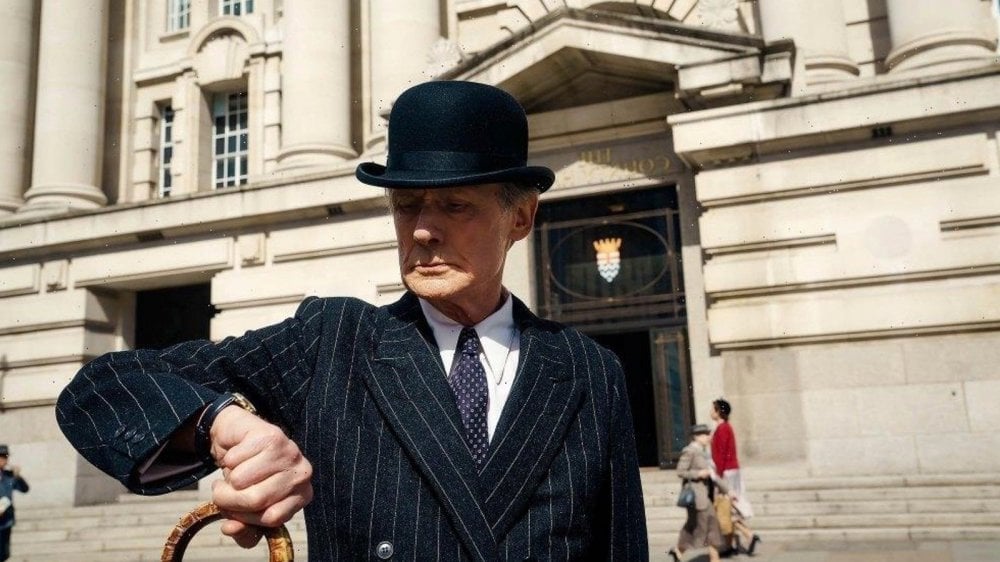Character Breakdown: Finding complexity and depth in ‘The Whale’
January 13, 2023
When an actor gains or loses a tremendous amount of weight for a movie role it often leads to accolades and Oscar buzz. Over the last 25 years, performers like Charlize Theron, Tom Hanks, Christian Bale, Renée Zellweger, Jared Leto and Anne Hathaway were all nominated or won in roles that famously required a change in weight.
And now, Brendan Fraser will likely be nominated for an Academy Award for his character in The Whale, a role that forced him to gain a considerable amount of weight and still required additional prosthetics and a “fat suit” to make his physical transformation complete.
But actors aren’t given awards simply for their ability to put on or drop weight, but rather by transforming into the characters on screen.
The Whale whose lead character is Charlie (Fraser) is more than just a morbidly obese individual. He’s a human being who struggles with complicated issues and who the audience can sympathize with. What goes into creating a character like Charlie?
Introducing the Main Character
In the first scene of The Whale, the audience doesn’t see Charlie. Instead, the camera focuses on an online college course and we hear Charlie talking to his class. Charlie claims the camera on his computer is broken so the only reference available is a black box labeled “Instructor.” He does have a calm voice and gets along well with his students – he’s an understanding and patient individual.
The next scene takes a dramatic turn.
It’s the first time the audience sees Charlie and his 600-pound frame. But also, he’s masturbating to gay porn until he starts to have trouble breathing. Even then, he doesn’t call an ambulance but instead reaches for a folder and pulls out a paper. It’s an essay on Herman Melville’s Moby Dick. Even when a stranger enters his apartment, Charlie demands that he doesn’t call an ambulance and hands the essay to Thomas (Ty Simpkins). After the episode passes and Thomas insists on getting Charlie help, he still refuses: he doesn’t go to hospitals.
The introduction offers a glimpse into the lead character’s life but also poses several questions that invests the audience into the story. Why must he hear the essay? Why won’t he go to the hospital when he clearly needs medical care? Also, who is Thomas and what will be his role in our discovery into Charlie’s story?
There is much more depth to Charlie that comes out over the course of the film but The Whale shows how much you can reveal in a character the first time we meet them.
More than just obese
The Whale gets a lot of attention regarding the size of the main character, but there is so much more to the individual than their body. There is a psychological reason for the way people behave whether they’re a fitness fanatic, a thief, an office worker or something more. Charlie’s obesity is only part of his overall character.
As the audience learns throughout the film, there is a reason for Charlie’s refusal to go to a hospital and why he needs to hear the essay. The audience also discovers that he’s selfless, a positive person, sees the best in people and has specific reasons why, as he states, “I’ve always been big, I just let it get out of control.”
The compelling “gimmick” is his weight, but a character needs more than a gimmick. In Leaving Las Vegas, Nicolas Cage plays a man who plans to drink himself to death in Las Vegas. The alcoholic part of his character is also that gimmick; there’s so much more to him than that.
Charlie is a stunning example of a deep, multi-dimensional character who we sympathize with because of who is. When you’re creating characters, think about them as a real person and dig for why they behave the way they do.
The Life of the Character
You can tell a lot about a character by the way they live. Everything from the condition of their home to the things they keep in their cabinets. Even if we never see a character’s home or certain aspects of their life, you should consider building a complete portfolio of who they are.
The Whale takes place in a single location – Charlie’s apartment. The audience learns a lot by what the home looks like and how Charlie lives within it. He spends a great deal of time sitting on the couch. When he gets up, he’s aided by a walker. The audience sees how he showers, how he sleeps and even how he orders and eats food. The character is also always leaning or holding onto a handle.
Every intimate detail of his life seems to be considered down to the type of porn he watches, his views on religion and the conflicts he has about knowing he will die soon and his disinterest in doing anything about it.
The more details you can consider for your character, the deeper the well that you can draw from. Some exercises you can do to define your character is to put that individual into their home: Is it a beachside mansion or rundown studio apartment? What kind of clothes would be in their closet? What books are on their nightstand? What channel would be on when you turn on the TV? What food is in their fridge?
Strong Supporting Characters
There are several other characters in The Whale, all of who play a role in defining the lead. Every character serves a purpose and is critical to telling the story by the way that Charlie interacts with them is telling on who is as a person. Although he speaks to them differently, his emotional throughline never wavers.
Liz (Hong Chau) is a nurse who stops by and tends to Charlie. He doesn’t pay her and she is the closest thing to a caretaker he has. Her first scene in the film centers around her tending to him after he thinks he’s dying. This character is brutally honest but in a loving way – there’s a reason why.
Thomas is the missionary who shows up at the beginning of the film and continues dropping by. His desire is to “save” Charlie and he is the tool in which the audience learns about the main character. It’s through Thomas that the viewer learns about Charlie’s life and why he is the person he has become.
Ellie (Sadie Sink) plays Charlie’s daughter who wants nothing to do with her dad. It’s through her that we learn about Charlie as a father and the unconditional love he has for his daughter.
With your stories, how the supporting characters treat your lead and how he interacts with them will determine how the audience sees the protagonist. They may not be as deep as your main character, but they must be fully realized with justification of who they are and why the make the decisions they do.
If you’re looking to create a complex, sympathetic character, The Whale offers a great study in developing the type of characters that are memorable and can drive a compelling story.
The Whale is currently playing in theaters.
The film stars Brendan Fraser, Hong Chau, Ty Simpkins, Sadie Sink and Samantha Morton. It was written by Samuel D. Hunter, based on his play, and directed by Darren Aronofsky.
Written by: Steven Hartman
Steven Hartman is an award-winning, optioned screenwriter. He was a Top 5 Finalist in Big Break’s Historical Category in 2019 and won Best Action/Adventure in Script Summit’s Screenplay Competition in 2021. He holds a Bachelor of Arts degree from Columbia College and had internships at Jerry Bruckheimer Films and Village Roadshow Pictures. Steve is a full-time writer and creative video producer by day and a screenwriter and novelist by night.- Topics:
- Screenwriting & Craft




